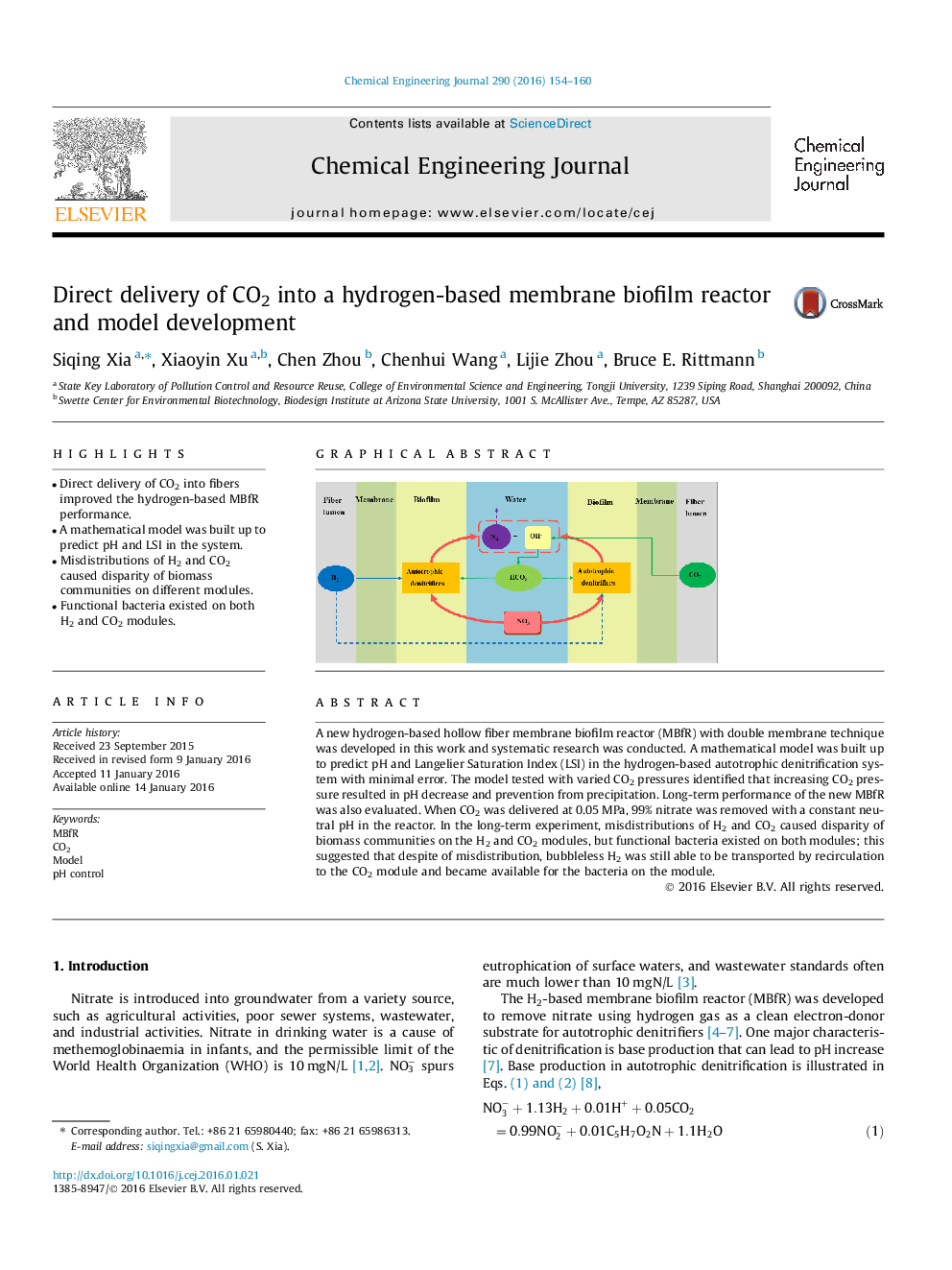| Article ID | Journal | Published Year | Pages | File Type |
|---|---|---|---|---|
| 145757 | Chemical Engineering Journal | 2016 | 7 Pages |
•Direct delivery of CO2 into fibers improved the hydrogen-based MBfR performance.•A mathematical model was built up to predict pH and LSI in the system.•Misdistributions of H2 and CO2 caused disparity of biomass communities on different modules.•Functional bacteria existed on both H2 and CO2 modules.
A new hydrogen-based hollow fiber membrane biofilm reactor (MBfR) with double membrane technique was developed in this work and systematic research was conducted. A mathematical model was built up to predict pH and Langelier Saturation Index (LSI) in the hydrogen-based autotrophic denitrification system with minimal error. The model tested with varied CO2 pressures identified that increasing CO2 pressure resulted in pH decrease and prevention from precipitation. Long-term performance of the new MBfR was also evaluated. When CO2 was delivered at 0.05 MPa, 99% nitrate was removed with a constant neutral pH in the reactor. In the long-term experiment, misdistributions of H2 and CO2 caused disparity of biomass communities on the H2 and CO2 modules, but functional bacteria existed on both modules; this suggested that despite of misdistribution, bubbleless H2 was still able to be transported by recirculation to the CO2 module and became available for the bacteria on the module.
Graphical abstractFigure optionsDownload full-size imageDownload as PowerPoint slide
